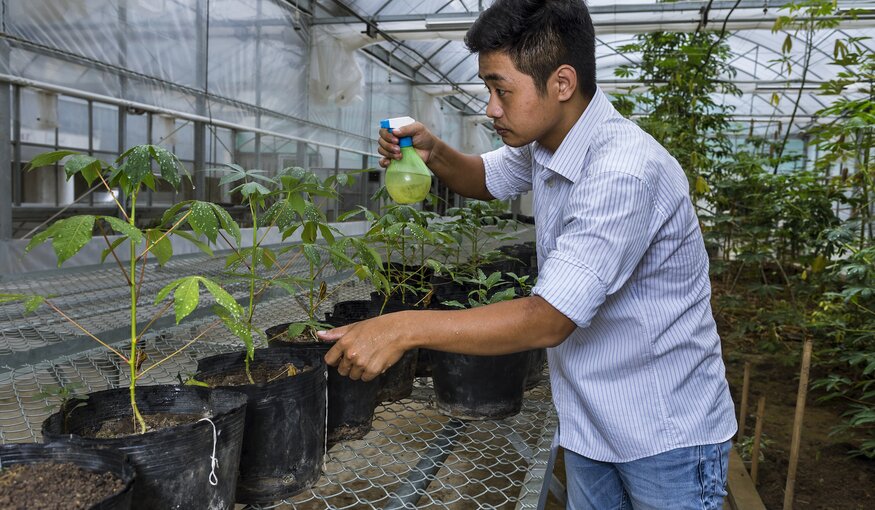Connecting Genebanks, Economics and Careers

16 November 2020
The Genebank Impacts Fellowship
Two cohorts of young professionals have had the opportunity to leverage their passion for economics and agricultural sciences through a Genebank Impacts Fellowship, supported by the CGIAR Genebank Platform and the Crop Trust. The fellows, selected from a wide range of countries and academic backgrounds, undertake research aimed at assessing the impacts of genebanks and the genetic materials they conserve and distribute.
“With the Genebank Impacts Fellowship Program, we want to make the connection between genebanks and other disciplines such as economics and social sciences,” says Program Coordinator, Nelissa Jamora, agricultural economist at the Crop Trust.
What makes the Genebank Impacts Fellowship special?
The Genebank Impacts Fellowship serves a double purpose. First, it provides an early-career opportunity for professional development and hands-on experience. But it also helps raise the profile of international genebanks, as the fellows’ work provides evidence of the various tangible contributions that genebanks make to livelihoods and development.
The fellows work on case studies, join workshops and bootcamps, and have access to mentorship from impact evaluation and conservation professionals. The fellowship is home-based and runs for at least six months. We typically ask fellows to visit one of the genebanks in person at least once over the course of the program.
I co-run the program with Melinda Smale of Michigan State University, who is one of the pioneers in the field of genebank valuation.
Tell us about the Impact Fellows.
The first cohort included seven fellows, from Colombia, Italy, Kenya, Morocco, the Philippines and the USA. Some were interested in agricultural development, some in plant science, and they had different levels of prior exposure to genebanks.
We began working with our second cohort earlier this year. The five new fellows are from Cameroon, Côte d’Ivoire, Germany, the Philippines and the USA. This group has a strong background in economics.
What kind of work are they doing as Impact Fellows?
Each fellow works on their own research project, attached to one of the CGIAR international genebanks. This year, we have fellows working with genebanks at the International Potato Center (CIP), the International Institute of Tropical Agriculture (IITA), the International Rice Research Institute (IRRI), the International Crops Research Institute for the Semi-Arid Tropics (ICRISAT) and the Africa Rice Center.
Each project involves gathering data from the genebanks to quantify the genebanks’ contribution to areas such as agricultural development and nutritional security. For example, last year, our cohort completed projects on subjects ranging from demand for banana germplasm in Asia to maize diversity rematriation in Latin America and biofortified beans in Africa.
At the end of the program, the fellows have high-quality research ready for publication. We’re especially excited this year to have a special section in the October 2020 issue of the journal Food Security. Every fellow from the 2018 cohort will have their work published, so we’re extremely proud of that.
How has the Covid-19 pandemic affected the program?
Since the fellowship is conducted remotely, we’ve avoided some major issues, but we’ve moved our workshops online, and current fellows have to rely on secondary data for much of their work. Depending on where they are based, some fellows have still been able to collaborate with people on the ground.
What’s your favorite part of working on this program?
It’s working with young people. I get to watch them make the same connection I am passionate about: between genebanks and economics.
I love to follow the professional growth of the impact fellows and how their interests evolve. Of course, it’s challenging, but it’s also fun and rewarding. Many of these young professionals started the program with no knowledge of genebanks, and now, a year later, they are experts in their fields, ready to make an impact.
Did you catch Nelissa's lightning talk about the Genebank Impacts Fellowship Program at the GLF Biodiversity 2020 conference in October? Watch it now:
